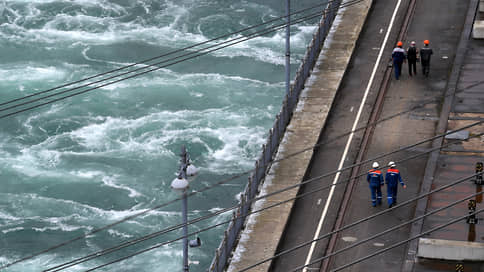The Ministry of Energy proposes to increase financial support for the industry by 30 billion rubles
[ad_1]

The Ministry of Energy proposes to increase the financial volume of support for the construction of small hydropower plants by 30 billion rubles. until 2035, that is, almost double the current level. The initiative will allow the launch of up to 82 MW of small hydropower plants every year. The Ministry of Energy hopes that such a measure will increase investor interest in the industry and will make it possible to more fully use Russia’s hydro potential. Small hydroelectric power plants, in particular, are needed in energy-scarce regions, say the Market Council. However, big business criticizes the idea, expecting an increase in the tariff burden on industry.
The Ministry of Energy has sent an appeal to the government to expand the program to support the construction of small hydropower plants, Deputy Head of the Ministry of Energy Pavel Snikkars told reporters on the sidelines of the annual conference of the Market Council (the regulator of energy markets). “We proposed to increase the total amount allocated to support small hydroelectric power plants by 30 billion rubles. for the period 2030–2035, which will allow the commissioning of up to 82 MW of small hydropower plants per year,” said Mr. Snikkars. Currently, the approved volume of support for small hydro generation until 2035 is 30 billion rubles. (at 2021 prices).
In Russia, renewable energy facilities—solar and wind power plants, as well as small hydroelectric power plants (up to 50 MW)—are built under a program to support green generation. Facilities supply electricity at a higher price. RES construction projects are selected through a competition based on the lowest delivery price.
In Russia, 4.2 GW of renewable energy sources have already been launched under the support program, including five small hydroelectric power plants with a capacity of 70.7 MW. Not a single investor came to the last competition at the beginning of this year, where small hydropower projects were selected for launch in 2027–2029. The Ministry of Energy proposed increasing support to attract investors and “to more fully utilize the huge domestic hydro potential.” The initiative is being approved by the government, Pavel Snikkars said. In Russia, hydroelectric power plants are being built by RusHydro, En+ and Gazprom Energoholding. They did not respond to Kommersant’s request.
The head of the Market Council, Maxim Bystrov, told Kommersant on the sidelines of the conference that such an initiative is a forced measure, but it may be justified if facilities are introduced in regions with shortages.
Maxim Bystrov believes that efficiency indicators (the maximum price for selling electricity under the support program) for small hydropower plants “must correspond to the real level of costs.” At the same time, hydroelectric power stations have non-energy positive effects that could be paid for from the federal and regional budgets, he noted. Currently, the price ceiling for the supply of electricity for small hydroelectric power plants with a launch in 2030 is 7.22 thousand rubles. for 1 MWh, and by 2035 the figure will be 6.1 thousand rubles. An investor in a competition reduces the price from the ceiling in order to become the winner.
Additional capacity support volumes will increase the annual payment for capacity in the segment of small hydropower plants by 15 billion rubles by 2035, that is, more than three times, as calculated by the analytical company Ensolve. The expansion of market volumes by another 500 MW is definitely positive for investors in hydropower generation and especially machine builders, who will receive a new impetus for localizing production, according to the Association for the Development of Renewable Energy (unites investors in renewable energy sources).
The industry criticizes the proposal of the Ministry of Energy. “It is not advisable to exceed the previously approved amount of support and increase the tariff and price burden on the economy,” they say in the “Energy Consumers Community” (unites industrial consumers of electricity). “You can redistribute funds within the approved amount, or better yet, remove barriers to voluntary demand, test long-term investment agreements, use measures to support industry, such as subsidized loan rates and tax breaks.”
[ad_2]
Source link





